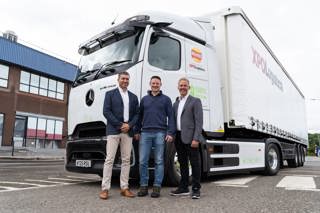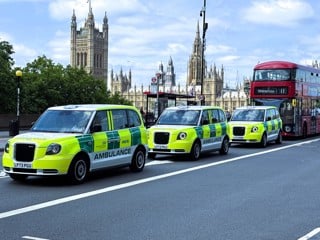Bannon said NHS Blood & Transport drivers were assessed every two years, although individual problem cases are addressed separately, while Aidan Rowesome, general manager Europe at event sponsor GreenRoad, said it uses in-car technology on its fleet and suggested routine checks should me more frequent.
“Checks every two years aren’t sufficient,” he said.
Bannon added that although the routine checks were carried out, NHS Blood & Transport’s 15 local transport managers also have responsibility for drivers in their areas.
Wright said its incentive of having a Driver of the Year award was also an effective way of improving performance on the road.
While Nash appreciated technology could be used to monitor behaviour and act as a reminder that the performance of vehicles could be closely monitored, there are a number of barriers that could prevent organisations from adopting in-car telematics.
She said: “We’re looking at technology but the drivers don’t want to feel like there’s ‘Big Brother’ in the car.
"How do we create awareness and interest and get them to buy into it so we can put this technology into the cars?”
Wright added that it was also a big challenge to persuade managers to sign off the cost of installing such equipment when it competes with needs and requests for cash to be spent on other items essential to businesses.
Delegates also discussed a reluctance to punish drivers with high accident rates if they were among the most productive sales people on the roads, but pointed out that in many cases the costs associated with repeated damage, including third-party damage, could easily offset extra business the driver might be responsible for.
Wright said one of AAH Pharmaceuticals’s drivers had three at-fault accidents, and decided extra driver training was the best solution.
He added: “The problem with a lot of drivers is they are not drivers; they are sales people and they have to drive to travel from A to B. But competence on the road is something they need to do the job.”
Scarr also outlined some of the measures in place to help reduce accidents on the Arval company car fleet.
“We have consequences,” she said. “If you let everyone know what the cost of accidents are and the cost of insurance for cars, they get the message. We don’t name and shame, but we show drivers what’s happening.
“If a driver has two at-fault accidents in 12 months we charge a small amount up to a maximum of £250. If there are more than two at-fault accidents in a year then there is a bigger conversation.”
Attendees discussed some of the problems around drivers spending too much time on the road and decided it was difficult to enforce solutions, such as hotel accommodation.
Kathryn Batchelor, benefits manager at KPMG, said: “A lot of people don’t’ want to stay away from home overnight.”
Delegates also discussed the motivation for going green as, for many organisations, actively pursuing more environmentally-friendly policies had slipped down the agenda, with protecting business against the recession and slow economic recovery taking priority.
Phil Redman, UK & Ireland fleet manager at IBM, said a combination of downsizing and selecting greener cars had allowed fleets to make significant savings while selecting greener options.
He said: “We changed our chauffeur fleet from long-wheelbase BMW 740s to Mercedes-Benz E350 CDI models which has resulted in savings.”
Redman outlined how employers benefit from selecting low CO2 vehicles, not only from the lower fuel bills associated with them, but also the lower Class 1A National Insurance contributions that are based on a car’s BIK tax band.
He also pointed to the company’s adoption of salary sacrifice vehicles, which are particularly suited to cars in lower BIK tax bands.
Delegates also discussed how driver choice of vehicles with lower tax liability brought average CO2 emissions of company cars within organisations to significantly lower levels than CO2 caps that might have been imposed, allowing these to be reviewed and set at lower levels.
- The next Fleet News Round Table will be held on Tuesday, June 12. To register interest, email kate.howard@bauermedia.co.uk


















Login to comment
Comments
No comments have been made yet.